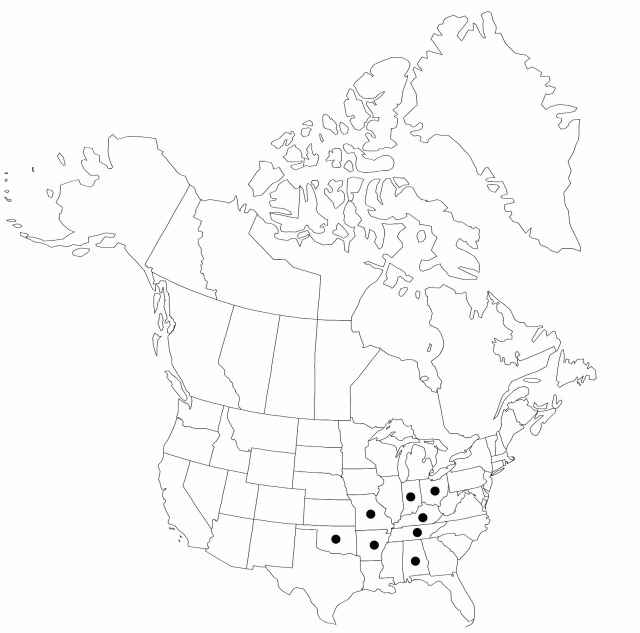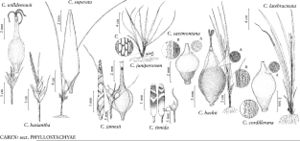Carex timida
Sida 19: 879, figs. 3C, 4A–C, 5C, 7. 2001.
Culms 4.6–34 cm; cataphylls with bulging cells. Leaves: basal sheaths dark-brown, tinged red-purple; blades green, exceeding culms, 1–4.3 mm wide, herbaceous, margins green, scabrous. Lateral spikes 1–3, basal, on widely spreading to nodding peduncles. Terminal spikes with staminate portion 2–12-flowered, 3.4–5.6 (–6.2) × 0.6–1 mm; pistillate portion 2–3 (–4) -flowered. Pistillate scales green, margins hyaline, white or with brown submarginal band, 1.6–2.4 mm wide, not more than 1.5 times as and not concealing perigynia; distal scales with hyaline margins 0.4–0.8 mm wide. Staminate scales white or pale green with subapical brown band, margins connate, enfolding scales above, (1.9–) 2.1–3.3 mm, (0.33–) 0.4–0.75 length of staminate portion of terminal spike, apex truncate or broadly obtuse. Anthers 0.4–1.5 mm. Perigynia 2–3 (–4) per spike, pale green to pale-brown, narrowly ovoid, obovoid, or ellipsoid, (4–) 4.4–5.6 (–6) × 1.6–2.1 mm, tightly enveloping achenes, apex abruptly tapering; beak 1.4–2.3 (–2.5) mm, scabrous. Stigmas filiform, flexuous, long, slender, strongly papillose. Achenes brown, subglobose, 2.1–2.5 × 1.6–2.1 mm.
Phenology: Fruiting spring–summer (May–Jul).
Habitat: Mesic deciduous woods, mixed deciduous and juniper woodlands, on lime-rich substrates
Elevation: 200–500 m
Distribution

Ala., Ark., Ind., Ky., Mo., Ohio, Okla., Tenn.
Discussion
Selected References
None.
Lower Taxa
"shortened" is not a number."widest" is not a number.
